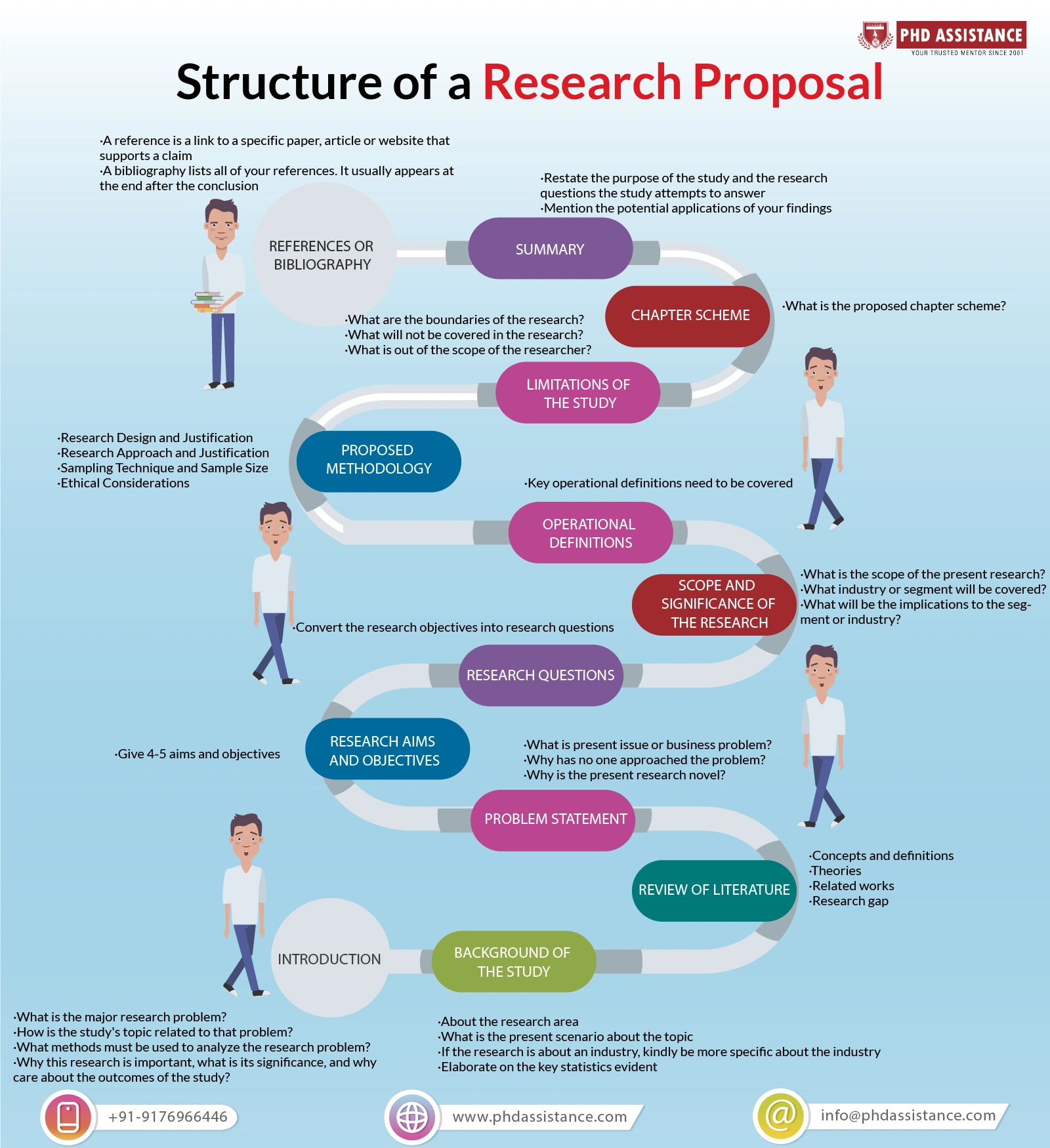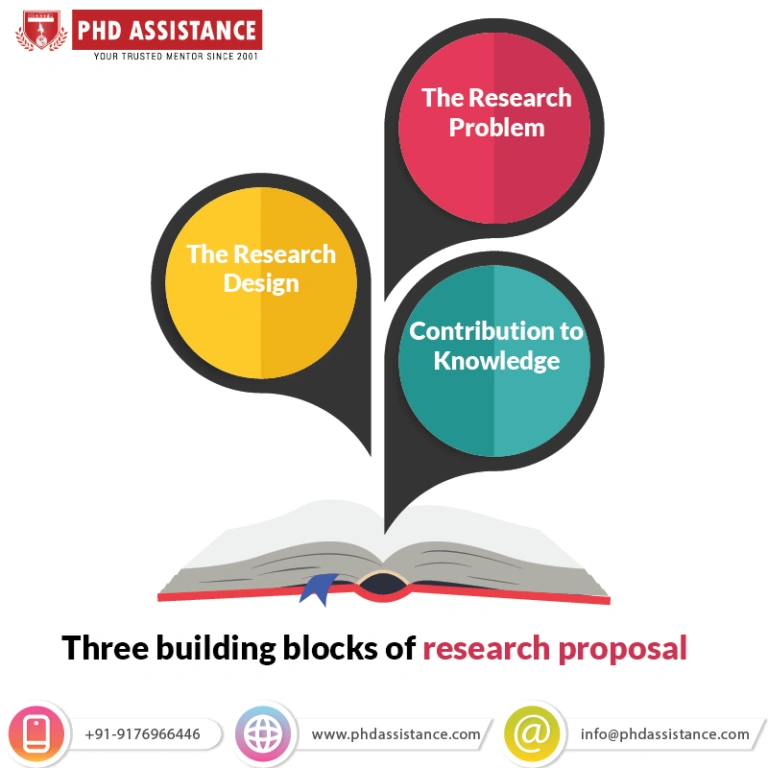What should the research proposal process look like?
The aim of a research proposal is to provide a detailed plan or ‘blueprint’ of your proposed research and focuses on a research problem and the practical ways in which the study should be conducted. The research proposal forms the backbone for the study and therefore becomes the most significant step in the process of conducting a research. The proposal should show how your work fits into the chosen topic and what type of new paradigm will it add to the existing literature, specify the question that the study will answer, and confirm the significance and implications of the answer.
There are various steps involved in creating a research proposal and following explanation will give you a step-by-step guidance on how the research proposal process should be done.
Step 1: Do a Preliminary Sorting of Ideas
The first step in the research proposal process is to do a preliminary sorting of ideas. You need to spend sufficient amount of time to learn about a topic that excites you most and that you want to work on.
Step 2: Topic Selection and Beginning the Proposal
From your research, identify unanswered questions and unexplored areas you may have. Explore deep into these questions and areas which will help you identify a topic. After identifying a specific topic, it is good to ask yourself the following questions before proceeding with the research proposal.
- Why is the topic important?
- What do I want to study?
- Is the topic relevant to the current research in my field?
- What problems will it help to solve?
- How does it build upon the research already performed on the topic?
- What exactly should I plan to do the proposal, and can I get it done within the available time?
After answering the above questions, you decide to proceed with the research proposal. The next step will be to organise your ideas, answer basic questions and prepare a structure based on which you will be writing the proposal.
Step 3: Organise Your Ideas, Questions and Structure
After choosing a specific topic for the research proposal, you should address three fundamental questions before moving to common elements of the proposal. These questions are the ‘what’, ‘why’ and ‘how’ of the research. In these, the ‘what’ of your research denotes the particular problem that your research will address; the ‘why’ of your research refers to the benefit or value your research will produce (why you want to do it?); and the ‘how’ of your research denotes the techniques you will use to collect, examine and interpret your data. You will have to address these three principal questions in order to get your research proposal approved.
The research proposal has three building blocks and they must coherently come together in the research proposal.

The research proposal also brings together a research design and a research problem in order to improve an existing answer or to get closer to find an answer to the problem.
After organising your ideas and answering the fundamental questions on the research proposal, the structure the proposal needs to be prepared. Generally, most research proposals share common elements such as a title, research aims and objectives, literature review, problem statement, methodology, chapter scheme, bibliography and so forth. The research proposal should include extensive literature reviews and must provide convincing evidence that there is a need for the proposed study. It should also describe detailed methodology for performing the research along with requirements of the academic or professional field and a statement on expected benefits and/or outcomes derived from the completion of the study.
The structure of a research proposal can be outlined as illustrated below. However, the structure may also differ based on the specific guideline suggested by your supervisor or guide.

Introduction
- What is the major research problem?
- How is the study’s topic related to that problem?
- What methods must be used to analyze the research problem?
- Why this research is important, what is its significance, and why care about the outcomes of the study?
Background of the Study
- About the research area
- What is the present scenario about the topic
- If the research is about an industry, kindly be more specific about the industry
- Elaborate on the key statistics evident
Review of Literature
- Concepts and definitions
- Theories
- Related works
- Research gap
Problem Statement
- What is present issue or business problem?
- Why has no one approached the problem?
- Why is the present research novel?
Research Aims and Objectives
- Give 4-5 aims and objectives
Research Questions
- Convert the research objectives into research questions
Scope and Significance of the Research
- What is the scope of the present research?
- What industry or segment will be covered?
- What will be the implications to the segment or industry?
Operational Definitions
- Key operational definitions need to be covered
Proposed Methodology
- Research Design and Justification
- Research Approach and Justification
- Sampling Technique and Sample Size
- Ethical Considerations
Limitation of The Study
- What are the boundaries of the research?
- What will not be covered in the research?
- What is out of the scope of the researcher?
Chapter Scheme
- What is the proposed chapter scheme?
Summary
- Restate the purpose of the study and the research questions the study attempts to answer
- Mention the potential applications of your findings
References or Bibliography
- A reference is a link to a specific paper, article or website that supports a claim
- A bibliography lists all of your references. It usually appears at the end after the conclusion
Step 4: Write the Research Proposal
This stage involves turning your ideas and structure into a flowing and connected text.
Step 5: Submission of the Research Proposal
After completing the research proposal, you will have to submit the work to your committee members. Take their advice and suggestions on your research, particularly the ones that limits the scope of your research further. Once the committee signs and approves your proposal, you can resume your research. As described above, the research proposal provides an outline of a research plan. Each of the main elements in the proposal contributes to this plan of action. Overall, a successful research proposal should demonstrate that you understand the steps involved in turning an idea into a proposal. A well formulated proposal provides a strong foundation for the research and prepare for timely and successful completion.
Research Help GuideResearch Subject



